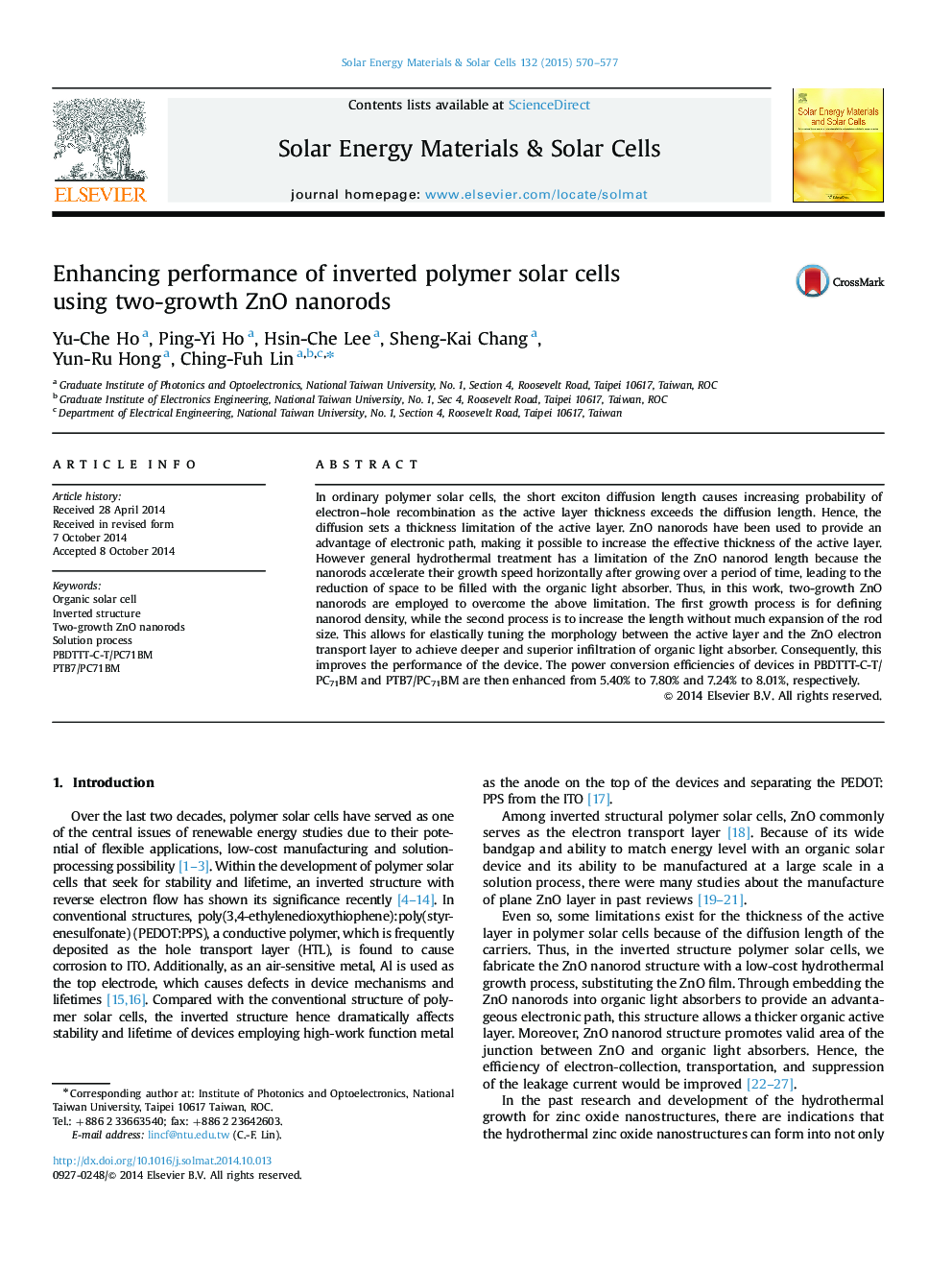| Article ID | Journal | Published Year | Pages | File Type |
|---|---|---|---|---|
| 6535483 | Solar Energy Materials and Solar Cells | 2015 | 8 Pages |
Abstract
In ordinary polymer solar cells, the short exciton diffusion length causes increasing probability of electron-hole recombination as the active layer thickness exceeds the diffusion length. Hence, the diffusion sets a thickness limitation of the active layer. ZnO nanorods have been used to provide an advantage of electronic path, making it possible to increase the effective thickness of the active layer. However general hydrothermal treatment has a limitation of the ZnO nanorod length because the nanorods accelerate their growth speed horizontally after growing over a period of time, leading to the reduction of space to be filled with the organic light absorber. Thus, in this work, two-growth ZnO nanorods are employed to overcome the above limitation. The first growth process is for defining nanorod density, while the second process is to increase the length without much expansion of the rod size. This allows for elastically tuning the morphology between the active layer and the ZnO electron transport layer to achieve deeper and superior infiltration of organic light absorber. Consequently, this improves the performance of the device. The power conversion efficiencies of devices in PBDTTT-C-T/PC71BM and PTB7/PC71BM are then enhanced from 5.40% to 7.80% and 7.24% to 8.01%, respectively.
Related Topics
Physical Sciences and Engineering
Chemical Engineering
Catalysis
Authors
Yu-Che Ho, Ping-Yi Ho, Hsin-Che Lee, Sheng-Kai Chang, Yun-Ru Hong, Ching-Fuh Lin,
